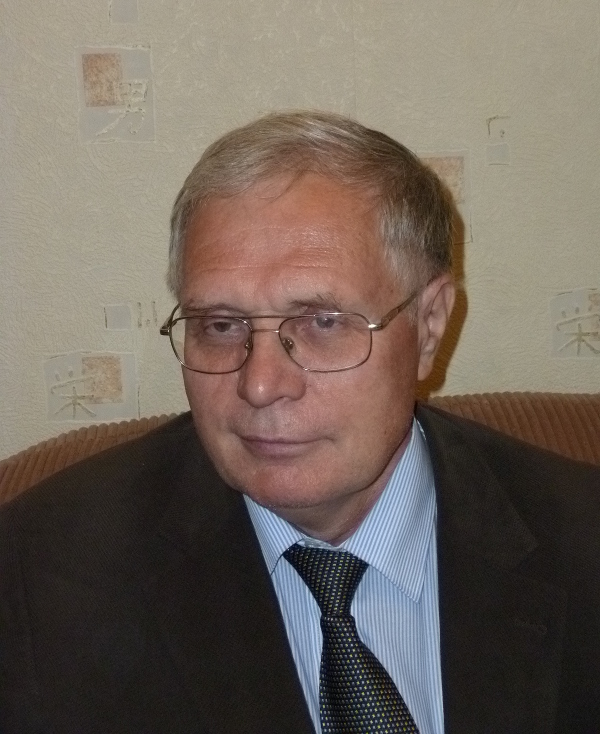
|

|
VIII-th International Conference "SOLITONS, COLLAPSES AND TURBULENCE: Achievements, Developments and Perspectives" (SCT-17) in honor of Evgeny Kuznetsov's 70th birthday
May, 21-25, 2017 Chernogolovka, Russia |
Energy flux enhancement, intermittency and turbulence via triad Fourier phase dynamics in dispersive and non-dispersive PDEs
Abstract:
In this work we present a study of Fourier-space phase dynamics in fluid dynamical PDEs with quadratic nonlinearity where triadic wavevector interactions are responsible for energy transport across scales. We examine in detail the dynamics of the triad Fourier phases, defined as triadic linear combinations of individual Fourier phases. These 'dynamical' triad phase variables play an explicit role in governing the time evolution of the Fourier amplitude and phase variables and thus help regulate the global dynamics of such fluid systems. Our study examines the influence of these triad phase variables on energy/enstrophy transfers in forced and dissipative one-dimensional systems such as Burgers and Korteweg-de Vries/Burgers equation [M. Buzzicotti, B. P. Murray, L. Biferale \& M. D. Bustamante, EPJE 39: 34 (2016)] and the two-dimensional Charney-Hasegawa-Mima equation [M. D. Bustamante, B. Quinn \& D. Lucas, PRL 113: 084502 (2014)], relevant in atmospheric and plasma physics. In these systems we see and quantify strong correlations between the triad phase dynamics and the evolution of the amplitudes of Fourier modes in the triads, with intermittent (in time) collective alignment of triad phases leading to maximally efficient energy/enstrophy fluxes throughout the inertial range modes of the system. In scenarios where intermittent alignment is present, all triad phases across 'inertial-range' spatial scales display a characteristic probability density function (PDF), with a marked peak at the 'perfect alignment' value of $\pi/2$; remarkably, the so-called 'degenerate' triads (where one mode is repeated) display a PDF with a less marked peak at the alignment value.
Following [Y. Kuramoto. Chemical oscillations, waves and turbulence, Springer (1984)] we define a complex order parameter that allows us to measure the level of synchronisation across many triads at different spatial scales. The intermittent events of collective alignment mentioned above resemble 'phase transitions' from disorder to order, with a time scale that is faster than the typical frequencies in the system. We hypothesise that these transitions are mainly due to the triad phase dynamics; to verify this hypothesis we investigate models where the Fourier modes' energies (the moduli squared of the amplitudes) are kept constant or prescribed in time, letting the triad phases evolve according to the governing PDE, and studying how alignments occur in these simplified models.
We further investigate how the synchronisation and alignments are disrupted via Fractal Fourier decimation or alternatively through the fine-tuning of dispersion in the Korteweg-de Vries/Burgers equation. The effect of these additions on the energy/enstrophy flux is discussed in detail. Finally, the careful analysis of these systems naturally leads us to a discussion as to how the distribution and dynamics of these Fourier triad phases may offer insight into energy/enstrophy transport in the case of isotropic Navier-Stokes turbulence.
Following [Y. Kuramoto. Chemical oscillations, waves and turbulence, Springer (1984)] we define a complex order parameter that allows us to measure the level of synchronisation across many triads at different spatial scales. The intermittent events of collective alignment mentioned above resemble 'phase transitions' from disorder to order, with a time scale that is faster than the typical frequencies in the system. We hypothesise that these transitions are mainly due to the triad phase dynamics; to verify this hypothesis we investigate models where the Fourier modes' energies (the moduli squared of the amplitudes) are kept constant or prescribed in time, letting the triad phases evolve according to the governing PDE, and studying how alignments occur in these simplified models.
We further investigate how the synchronisation and alignments are disrupted via Fractal Fourier decimation or alternatively through the fine-tuning of dispersion in the Korteweg-de Vries/Burgers equation. The effect of these additions on the energy/enstrophy flux is discussed in detail. Finally, the careful analysis of these systems naturally leads us to a discussion as to how the distribution and dynamics of these Fourier triad phases may offer insight into energy/enstrophy transport in the case of isotropic Navier-Stokes turbulence.
Authors
(no additional information)(no additional information)
Contact webmaster
